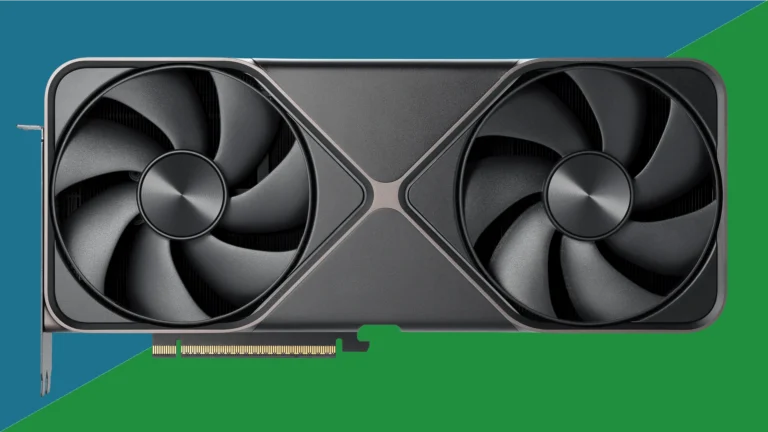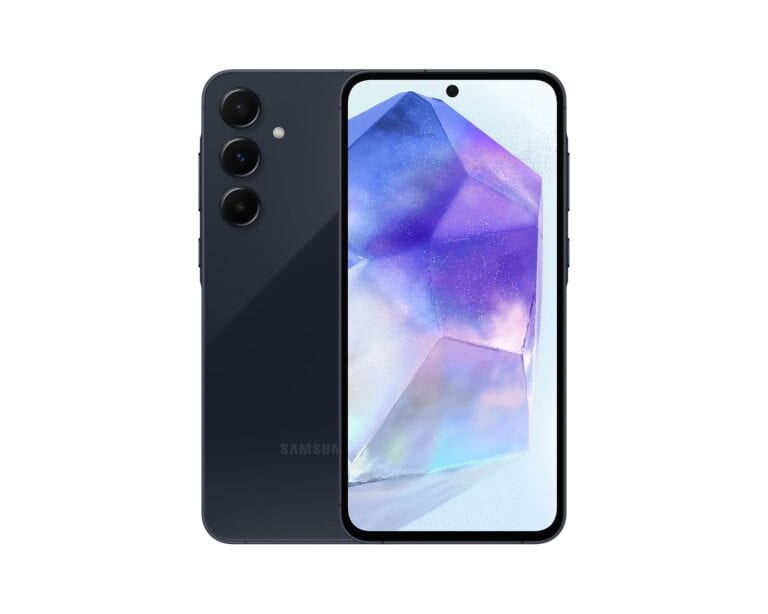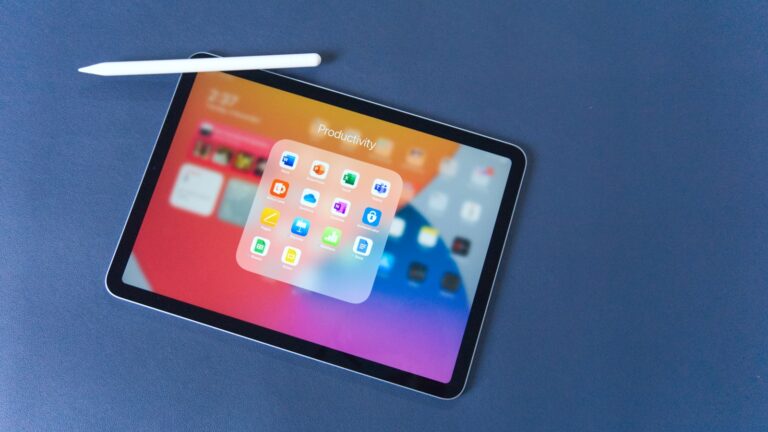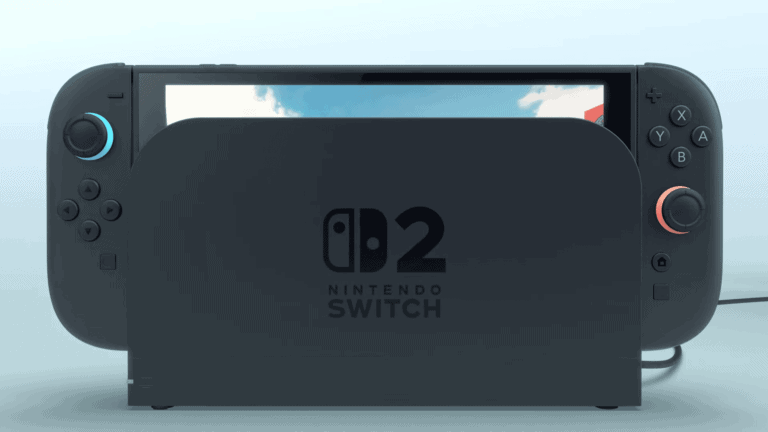
In today’s digital world, finding a healthy balance between technology and other aspects of life has become increasingly challenging. Many of us struggle with constantly buzzing notifications, the pressure to always be online, and the blurring lines between work and personal time. Creating a healthy tech-life balance isn’t just about reducing screen time—it’s about establishing personal boundaries that allow technology to enhance your life rather than control it.
The constant connectivity provided by our devices often leaves us mentally drained and physically inactive. You might notice increased stress, disrupted sleep patterns, or strained relationships as technology demands more of your attention. Finding balance doesn’t mean abandoning technology altogether, but rather being intentional about how and when you use it. Simple changes like avoiding multiple screens simultaneously or setting clear working hours can make a significant difference in your overall wellbeing.
1. Do a Digital Audit
- Track your screen time with built-in tools (like iOS Screen Time or Android Digital Wellbeing).
- Identify apps or habits that drain time without adding value.
- Ask yourself: Is this use productive, relaxing, or just automatic scrolling?
2. Set Boundaries with Devices
- Create tech-free zones (like the dining table or bedroom).
- Use Do Not Disturb or Focus Modes to control notifications during work or rest.
- Practice the “20-20-20 rule”: every 20 minutes, look at something 20 feet away for 20 seconds to reduce eye strain.
3. Schedule Tech Breaks
- Try a digital detox block each day (e.g., no screens for the first hour after waking or the last hour before bed).
- Dedicate one day a week for low-tech activities like reading, hiking, or journaling.
4. Use Tech to Support, Not Control
- Replace endless scrolling with mindful apps (e.g., meditation, habit trackers, or audiobooks).
- Automate repetitive tasks (bill payments, reminders) to free up mental space.
5. Prioritize Real-World Connections
- Choose face-to-face conversations over text when possible.
- Plan screen-free activities with friends or family.
- Protect social time from digital interruptions by leaving your phone aside.
6. Mind Your Work-Life Tech Boundaries
- Set clear work hours and avoid checking emails after them.
- Use separate devices (or at least separate user profiles) for work and personal life.
- Silence work apps during personal time to prevent burnout.
7. Practice Mindful Tech Use
- Before opening an app, ask: Why am I using this right now?
- Replace passive scrolling with intentional actions (e.g., learning a skill, connecting with someone).
- Try “single-tasking” instead of multitasking—focus on one app or task at a time.
8. Reconnect with Offline Joys
- Revisit hobbies that don’t involve screens—cooking, sports, art, or gardening.
- Use downtime to recharge in ways that nurture your body and mind.
⚖️ Quick Balance Checklist
- 📊 Track screen time weekly
- 🚫 Tech-free zones & hours
- 🌿 Daily offline breaks
- 👥 Prioritize human connection
- 💤 Protect rest & sleep from screens
Final Thought
A healthy tech-life balance doesn’t mean cutting technology out—it means choosing how and when to engage with it. By setting boundaries, practicing mindfulness, and valuing offline experiences, you can enjoy the best of both worlds: productivity and peace.
Key Takeaways
- Setting clear boundaries with technology helps you maintain control over your time and attention rather than letting devices dictate your schedule.
- Regular disconnection periods and guided meditation apps can significantly improve your mental health and relationships with others.
- Supporting your physical health through regular movement breaks and prioritizing sleep over late-night screen time creates a more sustainable tech-life balance.
Understanding Tech Life Balance
In today’s digital age, finding equilibrium between technology and personal well-being has become increasingly challenging yet crucial. The constant connectivity affects your mental health, relationships, and overall quality of life.
Defining Work-Life Balance
Work-life balance in tech refers to maintaining healthy boundaries between your professional responsibilities and personal life. It means having adequate time for work, family, hobbies, and self-care without one area consistently overshadowing others.
Setting clear boundaries between work and personal time is essential. This includes defining specific work hours and creating tech-free zones in your home.
Balance doesn’t mean equal time for everything every day. Instead, it’s about flexibility and making intentional choices about how you allocate your energy and attention.
Remember that balance looks different for everyone based on career stage, family responsibilities, and personal preferences. What matters is finding what works for you.
The Impact of Tech on Personal Life
Technology has blurred the lines between work and personal time, making it difficult to truly disconnect. The “always-on” culture in tech means you might feel pressure to respond to messages or handle issues outside of work hours.
Digital devices can disrupt your sleep patterns when used before bedtime. The blue light from screens interferes with melatonin production, making it harder to fall asleep.
Tech overuse can affect your relationships. When you’re constantly checking notifications, you miss out on meaningful in-person interactions and experiences.
Physical health suffers too. Extended screen time leads to:
- Eye strain and headaches
- Poor posture and neck pain
- Reduced physical activity
- Mental fatigue
Studies show that establishing boundaries at the intersection of technology and work-life balance is crucial for long-term wellbeing.
Recognizing the Signs of Imbalance
Pay attention to warning signs that your tech-life balance is off. Physical symptoms like persistent headaches, back pain, or disrupted sleep patterns often appear first.
Emotional indicators include feeling irritable when separated from devices or experiencing anxiety when unable to check work communications. You might notice declining interest in activities you once enjoyed.
Social withdrawal is another red flag. If you’re choosing screen time over face-to-face interactions consistently, it’s time to reassess your habits.
Work-related burnout manifests as chronic exhaustion, cynicism toward work, and reduced professional efficacy. Early signs include dreading work days and feeling emotionally drained after work.
Your productivity might also suffer. Despite working longer hours, you accomplish less and make more mistakes. This creates a harmful cycle where you work more to compensate, further worsening the imbalance.
Strategies for Balance
Finding tech-life balance requires intentional actions and specific routines. These strategies can help you reclaim control over your digital life while maintaining productivity and personal well-being.
Setting Boundaries with Technology
Creating clear boundaries between your digital and real-world life is essential for mental health. Start by designating tech-free zones in your home, especially your bedroom. This helps improve sleep quality and reduces late-night scrolling.
Set specific times when you’ll check email and social media rather than responding to every notification immediately. Many find success with the two-minute rule – if something takes less than two minutes, do it now; otherwise, schedule it for later.
Consider using apps that monitor and limit your screen time. Tools like Digital Wellbeing (Android) or Screen Time (iOS) provide insights into your usage patterns.
Try implementing a digital sunset – turn off all devices 1-2 hours before bedtime to help your brain wind down naturally.
Time Management Techniques
Effective time management is crucial for balancing tech use with other priorities. The Pomodoro Technique (25 minutes of focused work followed by a 5-minute break) can boost productivity while preventing digital burnout.
Plan blocks of time for different tasks throughout your day. This structured approach helps you stay focused and reduces multitasking.
Use technology to fight technology – productivity apps can track time spent on tasks and help identify where you’re losing focus.
Try this simple prioritization matrix:
| Urgent | Important | Action |
|---|---|---|
| Yes | Yes | Do immediately |
| No | Yes | Schedule time |
| Yes | No | Delegate if possible |
| No | No | Eliminate |
Batch similar activities together (like checking emails or social media) to reduce context switching and mental fatigue.
Prioritizing Personal Time
Personal time isn’t just what’s left after work – it deserves deliberate planning. Schedule self-care activities with the same commitment as work meetings. Mark them in your calendar and treat them as non-negotiable.
Develop hobbies that don’t involve screens. Reading physical books, outdoor activities, or crafting can provide meaningful breaks from digital stimulation.
Look for opportunities to nurture your physical health and mental well-being through regular exercise, meditation, or simply spending time in nature.
Create morning and evening routines that don’t start or end with technology. Instead of checking your phone first thing, try journaling, stretching, or enjoying breakfast without screens.
Remember that saying “no” to additional commitments is saying “yes” to your personal time and well-being.
Implementing Flexibility in Work
Flexibility in your work schedule can significantly improve tech-life balance. If possible, negotiate flexible hours or remote work options with your employer to better accommodate personal needs.
Maximize your devices’ efficiency with automation and time-saving tools. Set up email filters, use templates, and explore productivity apps that streamline repetitive tasks.
Communicate clear expectations about your availability to colleagues. Let them know when you’ll be offline and stick to those boundaries consistently.
Consider a “fake commute” if working from home – use the time you would have spent commuting to transition mentally between work and personal time through a walk or other activity.
Regularly assess your workload and speak up if it becomes unmanageable. Burnout reduces productivity and damages health, making it counterproductive for everyone.
Workplace Contributions
Companies play a vital role in helping tech professionals find balance between work demands and personal life. Organizational policies, culture, and resources directly impact employee well-being and productivity.
The Role of Company Culture
Company culture sets the foundation for work-life balance. Skilled recruiters can help you find organizations that truly value balance, not just in words but in actions. Look for these positive indicators:
- Managers who model healthy boundaries
- Flexible scheduling options
- Clear expectations about after-hours communication
- Recognition for quality work rather than long hours
You’ll know you’ve found the right culture when taking time off doesn’t come with guilt. The best tech companies understand that your personal time fuels your creativity and problem-solving abilities.
When interviewing, ask specific questions about how the company supports employees during high-stress periods. Their answers reveal the true priorities of the organization.
Encouraging Employee Well-Being
Forward-thinking tech companies actively promote employee well-being through structured programs. Companies can support employees with children by offering flexibility for family responsibilities.
Effective well-being initiatives include:
Physical Health Programs
- On-site fitness facilities or gym memberships
- Standing desks and ergonomic equipment
- Healthy snack options
Mental Health Support
- Counseling services through employee assistance programs
- Stress management workshops
- Meditation rooms or apps
Your well-being directly impacts your performance. When facing burnout signs, speak with your manager about adjusting workloads or taking time off. The best employers recognize that preventing burnout ultimately saves productivity and reduces costly turnover.
Providing Necessary Resources and Feedback
Proper resources and regular feedback help you work efficiently and reduce unnecessary stress. When companies invest in the right tools, you can accomplish more in less time.
Essential resources include:
- Current technology that minimizes frustration
- Clear documentation and knowledge bases
- Adequate staffing for project demands
- Training opportunities for skill development
Tech tools can also help you disconnect after hours. Ask your employer about apps that block work notifications during personal time.
Feedback should flow in both directions. Regular performance discussions help you understand priorities and adjust your approach before issues escalate. Similarly, companies benefit when you provide feedback about workload concerns and process inefficiencies.
Remember that requesting resources isn’t complaining—it’s contributing to workplace efficiency and protecting your well-being.
Tools and Techniques
The right tools can transform your tech experience from overwhelming to empowering. Finding the right balance requires both smart technology use and effective communication strategies.
Leveraging Technology for Efficiency
Time Management Apps:
- Trello and Asana help you create clear schedules and visualize project timelines
- Doist for prioritizing daily tasks
- Evernote for organizing notes and ideas
Use automation to handle repetitive tasks. Set up email filters, calendar reminders, and workflow automations to free up mental space.
Digital Wellness Features:
Many devices now include well-being features that track and limit your screen time. Use these to set boundaries on your technology use.
To start your day right, identify your most important tasks. Clarify your priorities each morning, focusing on what truly matters.
Email and Communication Management
Batch Processing Technique:
Instead of checking emails constantly, designate specific times for email review. Try checking at 10 AM, 1 PM, and 4 PM rather than responding to each notification.
Communication Boundaries:
- Set clear “do not disturb” hours
- Use status indicators on messaging platforms like Slack
- Create email signatures that note your response timeframe
Email Organization Strategy:
- Use folders or labels to categorize messages
- Unsubscribe from unnecessary newsletters
- Try the “touch once” rule—decide immediately to delete, delegate, respond, or file
Consistent habits are as important as the tools you use. Establish routines around checking messages to prevent communication overload.
Personal Initiatives
Taking control of your tech-life balance requires personal action and commitment. By focusing on your mental health, hobbies, and strategic vacation planning, you can create a healthier relationship with technology in your daily life.
Fostering Mental Health
Your mental health should be a top priority when navigating today’s hyper-connected world. Setting clear boundaries between work and personal time is essential. This means defining specific hours when you’ll be “off the clock” and unavailable for work communications.
Consider implementing a digital detox for at least 30 minutes before bedtime. This practice can significantly improve your sleep quality and reduce anxiety.
Mindfulness practices can serve as powerful tools in maintaining mental clarity. Even five minutes of meditation daily can help you stay present rather than being pulled into the digital vortex.
Key mental health practices to consider:
- Morning meditation before checking devices
- Regular outdoor breaks without technology
- Journaling about your relationship with technology
- Using apps that monitor and limit screen time
Pursuing Hobbies and Interests
Engaging in offline activities provides a necessary counterbalance to screen time. Reflection on personal interests that don’t involve technology is crucial for a well-rounded life.
Choose hobbies that fully engage your attention and pull you away from the digital world. Activities like gardening, cooking, painting, or playing a musical instrument demand your full presence and provide a refreshing break.
Physical activities deserve special attention. Whether it’s hiking, cycling, or team sports, movement not only improves your physical health but also creates space between you and your devices.
Try blocking time in your calendar specifically for hobby development. Treat these appointments with the same importance as work meetings. This dedicated time helps ensure your personal interests don’t get squeezed out by digital demands.
Deciding When to Take a Vacation
Strategic vacation planning is vital for maintaining tech-life balance. Taking stock of your habits and needs helps you determine when you most need a break from the digital environment.
Look for signs of burnout or diminishing productivity as indicators that a vacation is needed. These might include trouble focusing, increased irritability, or a sense of dread when opening your work applications.
When planning time off, consider the type of vacation that will truly rejuvenate you. Some may benefit from a complete digital detox in nature, while others might enjoy a structured learning vacation with limited tech use.
Vacation planning checklist:
- ✓ Set up thorough out-of-office protocols
- ✓ Brief colleagues on your unavailability
- ✓ Delete work apps from your phone temporarily
- ✓ Establish emergency-only contact methods
- ✓ Plan the first day back to avoid overload
Adapting to Life Changes
Life changes are inevitable in the tech world, and they require thoughtful approaches to maintain balance. Being flexible and prepared helps you navigate transitions smoothly while preserving your wellbeing.
Navigating Career Transitions
Career changes in tech can be both exciting and overwhelming. When considering a switch, take time to plan ahead and evaluate how the change will affect your work-life balance.
Before making a move:
- Research typical work hours and culture at target companies
- Connect with current employees to understand realistic expectations
- Consider how a new location might impact your commute and lifestyle
If relocating for work, build adaptation time into your plan. Don’t expect to maintain the same productivity immediately after a major move.
Set clear boundaries from day one at your new position. It’s easier to establish healthy patterns at the beginning than to correct problematic ones later. Remember that prioritizing tasks becomes even more crucial during transitions.
Adjusting to Post-Pandemic Work Environments
The pandemic permanently changed how tech professionals balance work and personal life. As hybrid and remote models become standard, you need intentional strategies to thrive.
When working remotely, setting clear working hours prevents work from consuming your entire day. Create physical separation between your workspace and relaxation areas, even in small living environments.
For hybrid schedules, maximize office days for collaboration and home days for focused work. This approach plays to the strengths of each environment.
Mental health considerations:
- Schedule regular check-ins with colleagues to combat isolation
- Use time-tracking tools to ensure you’re not overworking
- Build transition rituals between work and personal time
Incorporate daily physical activity into your routine to counteract the sedentary nature of remote tech work.
Frequently Asked Questions
Many people struggle to balance their relationship with technology. These questions address common concerns about maintaining well-being while navigating our digital world.
What strategies can be employed to maintain a healthy balance between technology use and personal life?
Setting clear boundaries is essential for tech-life balance. Create specific tech-free times during your day, such as meals or the hour before bedtime, and stick to them consistently.
Setting realistic usage targets helps align your digital activities with personal needs. Try tracking your screen time for a week to identify where you might cut back.
Consider using dedicated spaces for different activities. Keep work devices out of your bedroom to create a separation between professional and personal life.
How does the increased use of technology impact mental health, and what measures can be taken to mitigate these effects?
Constant connectivity can lead to increased stress, anxiety, and feelings of being overwhelmed. The pressure to always be available can disrupt sleep patterns and contribute to burnout.
Regular digital detoxes can provide mental relief. Even short breaks of 24-48 hours away from non-essential technology can help reset your relationship with devices.
Practicing mindfulness while using technology helps combat negative effects. Pay attention to how different apps and activities make you feel, and prioritize those that bring genuine value.
What practical steps can be taken to reduce screen time while maintaining productivity?
Use productivity tools to your advantage by setting time limits on distracting apps. Many smartphones now include built-in screen time management features.
Batch similar tasks together to minimize the constant checking of devices. Set specific times to check email or social media rather than responding to every notification.
Employ technology sensibly by using tools for scheduling and task management, but avoid letting them control your day.
Can technology be leveraged to improve work-life balance, and if so, what are effective examples of this?
Automation tools can handle repetitive tasks, freeing up your time for more meaningful work or personal activities. Consider using smart home devices to streamline household management.
Calendar blocking applications help maintain boundaries between work and personal time. These tools can ensure you dedicate enough time to both professional obligations and personal well-being.
Companies like Google and Basecamp offer examples of how technology can support better work-life balance through flexible scheduling tools and communication guidelines.
How might the 888 rule be applied to create a better balance between work, leisure, and rest in today’s digital age?
The 888 rule divides your day into three equal parts: 8 hours for work, 8 hours for personal activities, and 8 hours for sleep. In the digital age, this framework provides a helpful structure.
Within your 8 hours of personal time, establish tech boundaries. Perhaps allow only 2 hours for entertainment-based screen time while reserving the remaining 6 hours for offline activities.
Using time-tracking tools can help you monitor adherence to the 888 rule. Regular assessment will reveal whether technology is encroaching on your leisure or rest periods.
What actionable advice exists for prioritizing personal relationships and wellbeing in an era dominated by technology?
Create device-free social experiences by establishing “phone stacking” during meals or gatherings. This practice encourages everyone to be fully present during interactions.
Establish consistent habits for disconnecting. Let friends and family know when you’ll be unavailable, and honor those commitments to yourself.
Schedule regular offline activities that you enjoy. Whether it’s hiking, cooking, or reading physical books, these activities provide necessary contrast to digital engagement.






